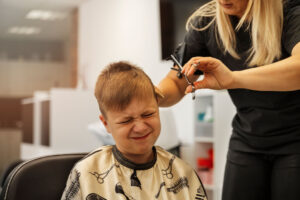Shopping for a child with Autism Spectrum Disorder (ASD) who doesn’t gravitate toward typical toys is often seen as challenging, but in reality, it can be a chance to rethink what “play” really means. For children who may have limited interests, sensory-friendly gifts and items that support learning through ABA therapy can be both engaging and beneficial. Here are some ideas that may spark curiosity, encourage interaction, and support their sensory needs.
Sensory-Friendly Toys
Children with ASD often have unique sensory needs, and toys that support their sensory diet can be very rewarding. A sensory diet is a structured activity plan tailored to provide the sensory input a child needs throughout the day. Consider these options:
Fidget Toys: Handheld sensory toys, such as squishy balls, spinners, or stretchy bands, provide tactile stimulation that can be both calming and engaging.
Weighted Blankets or Lap Pads: These can give deep-pressure input that helps calm and focus a child.
Sensory Bottles: Filled with colorful liquids or glitter, sensory bottles can provide visual stimulation that keeps a child engaged without overwhelming them.
Toys that Promote ABA Therapy Goals
Applied Behavior Analysis (ABA) therapy often includes goals for communication, play skills, and social interaction. Look for toys that can support these developmental areas:
Cause-and-Effect Toys: Toys that respond to a child’s actions, like pop-up toys or toys with buttons and lights, can encourage engagement and introduce the concept of cause and effect, which is foundational in ABA learning.
Puzzles and Sorting Games: These help with cognitive skills like problem-solving and matching, often used in ABA sessions. Opt for simple puzzles or color-sorting toys that are easy to use and reinforce concepts your child may be working on.
Interactive Books: Books with textures, sounds, or flaps are great for children who enjoy interactive play. These books provide opportunities to practice labeling, a key skill in ABA.
Adaptive Play Ideas for Low-Interest Children
Some children may struggle with new toys or show limited interest, but adapting play strategies can make these items more appealing.
Use Preferred Sensory Items in Play Routines: If your child has specific sensory preferences (e.g., they like squeezing or tapping), incorporate those sensations into play. For example, use a fidget toy to practice taking turns.
Simple Art Supplies: Try large crayons, textured paper, or finger paints that offer tactile feedback without requiring advanced fine motor skills.
Practical Gifts That Build Life Skills
Life skills toys, such as pretend play items (like food, cleaning sets, or dress-up clothes), can help children practice everyday actions and social routines. Consider toys that imitate real-life activities they might enjoy, such as:
Pretend Play Sets: Toy kitchens, doctor kits, or cash registers can be useful for role-playing activities and practicing routines.
Building Blocks or Magnets: These can be used in structured activities or open play, allowing children to work on stacking, building, or creating simple patterns.
In Summary
When choosing gifts, remember that every child is unique, and finding something that sparks their interest may take time and patience. Sensory-friendly items and toys that align with ABA therapy goals can be excellent starting points. Incorporate these toys into daily routines or therapy sessions to encourage engagement and help build valuable life skills.
These thoughtful gift options can provide the sensory input, developmental support, and engaging activities to meet your child’s needs and interests.


